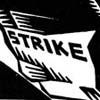|
|||||||||||||
|
the World's Greatest Pirates
The Story of How By Punkerslut
Thomas Edison, Exploiter of Other Inventors
In 1892, William Kennedy Laurie Dickson, with a little assistance from Thomas Edison, invented the Kinetoscope. [*1] [*2] It was an early device for projecting movies. Thomas Edison's laboratories also developed the Kinetograph, another early device in motion pictures used to record film. [*3] W.K.L. Dickson never received recognition for his essential contributions to film production, with Edison claiming himself as the inventor when he played an inessential role. [*4] This was not unusual for Edison. For instance, he once commissioned Nikola Tesla to design and perfect the modern, automobile engine, promising him $50,000 compensation. Instead, when he completed this task, the great Russian inventor Tesla was only offered a $25 weekly raise. [*5] [*6] [*7] Thomas Edison received his patent on the picture camera and film on August of 1897. [*8] Only a few years after 1900, Thomas Edison became the dominant owner of patents necessary to cameras and film production. [*9] By 1901, Edison had filed 23 lawsuits for infringement of his patents against unlicensed filmmakers. [*10] In 1907, the highest courts of the US finally recognized Thomas Edison's patents over equipment in filming and the camera. This single act declared that virtually every single camera in use was in violation of Thomas Edison's patents. [*11] Until this ruling, Edison only had the patent, but was unable to obtain a ruling in his favor against pirates who were using his film technology without paying royalties. Many companies were refusing to pay royalties to Thomas Edison's system of patents, including those that would become Paramount, Fox Twentieth Century, Warner Bros., and Universal Studios. [*12]
Robber Barons Fight Over the Prize
By 1910, the industry had become far more lucrative to investors, with the industry split into two sectors. First, Edison had established the Motion Picture Patents Company (MPPC) in 1908. [*13] This was done in cooperation with those who owned essential patents in movie projections. Since producing and selling film required both patents, it was natural for a monopoly of patent-holders to "cross-license" each other. [*14] Members of the MPPC included Biograph, American Vitagraph Company, Selig Polyscope Company, Lubin, American Star Films, American Pathe Pictures, Essanay Studios, and Kalem Company. [*15] Second, there was a band of outlaw movie theaters and film producers who refused to pay for licensing, relying on pirated and unpatented equipment. "Unlicensed" members called themselves independent, which sounds preferable to "stealing intellectual property." These exact same companies, such as Warner Bros. and Paramount Pictures, today call their unlicensed users "pirates," "criminals," and "outlaws." [*16] J.A. Aberdeen describes their situation: "In the summer of 1909 the independent movement was in full-swing, with producers and theater owners using illegal equipment and imported film stock to create their own underground market." [*17] In 1907, the producers of film thought they would never face piracy as a problem. They were reproducing cameras without patents, themselves comfortable that any of their customers would be incapable of reproducing a movie theater and movies in their home. Now that day has come, with the advent of filesharing technology. And with this invention, the movie industry has emphatically changed it's position: from demanding the pro-piracy position in government to demanding the anti-piracy position in government. [*18] Why was Hollywood chosen as the ideal location for film producers? Many arguments are given, such as the weather, the variety of scenery, and an impoverished working-class that would work for anything. All of these reasons are cited, but a New York Times article boils it down to one pertinent fact: "Los Angeles's distance from New York was also comforting to independent [pirate] film producers, making it easier for them to avoid being harassed or sued by the Motion Picture Patents Company, a k a the Trust, which Thomas Edison helped create in 1909." [*19] Another writer clearly explains the motives of these filmmakers...
On October 1, 1915, a court ruled that the MPPC violated the Sherman Anti-Trust Act, ordering the disintegration of the monopoly. [*21] The reaction of the Los Angeles, pirate filmmakers was a rational one: they had formed their own monopoly in resistance to the monopoly of Edison. This began with the organization of Carl Laemmle's Independent Moving Pictures (IMP) Company, which eventually merged together into a single corporate trust, including: Powers Motion Picture Company, Rex Motion Picture Company, Champion Film Company, Christie-Nestor Studio, and the New York Motion Picture Company. Today, the company is simply known as "Universal Studios." [*22] After the MPPC lost its appeal, a judge ordered the organization to be officially terminated. The U.S. Department of Justice alleged that Edison controlled between 70% and 80% of a $100 million industry. [*23] All of these legal battles and struggles involved wealthy capitalists fighting each other over millions of dollars, which today would have been worth billions. The inventor of the motion picture camera, William Dickson, never received any of these money, spending the rest of his life in obscurity. Thomas Edison did not work for the invention he patented, and similarly, neither did the new monopoly of Hollywood. Edison saw that he could use the law and his property to steal from his workers; but he did not realize that others could use the law and their property to steal what he had taken from others.
New Kings for Old Thrones
Many of the companies and businesses infringing on the patents of Thomas Edison should be easily recognizable today. William Fox, for instance, was running his own Nickelodeon in Brooklyn, which eventually became Twentieth-Century Fox Studios. [*24] Harry M. Warner founded his first film studio in 1907, which eventually became Warner Brothers. [*25] By 1898, Jesse Lasky already owned part of a film production company, which later would become Paramount Pictures. [*26] In 1903, Adolph Zukor invested in his first cinema outlet, eventually becoming a co-founder of Paramount Pictures. [*27] By 1905, Marcus Loew owned a chain of nickelodeons, or small, community movie theaters. His empire would eventually merge into Metro-Goldwyn-Mayer, or more simply "MGM." [*28] Louis B. Mayer was another entrepreneur who opened his first movie theater in 1907 in Massachusetts, eventually becoming a studio boss of MGM. [*29] Carl Laemmle opened up his own nickelodeon in 1906, later becoming the founder of Universal Studios. [*30] Twentieth-Century Fox Studios, Warner Brothers, Paramount Pictures, Universal Studios, and MGM: these were some of the earliest pirates of the film industry. Specifically notable in this resistance to copyright enforcement were the original companies forming Twentieth-Century Fox Studios, Paramount Pictures, and Universal Studios. [*31] These are the major companies forming the film industry today, which earned $9.49 billion in the year of 2006. [*32] This money was earned by investing in producing new films; and the money for the investment all came from using illegal, unpatented equipment to produce films in the early 1910's. The investment was illegal, and similarly, the returns -- from box offices, from rentals, from sales -- are similarly illegal. These stolen profits were maintained by Hollywood the exact same way that Edison maintained profits stolen from his worker: monopoly. As of 2010, the top six film producers, which include many of the originals, held 84.5% control of the market in films. [*33] If one were to take the total theft of the film industry to be constant, according to other figures from these same statistics, Hollywood has illegally pirated $902 billion in 2006 dollars since 1915. Though often described as "annual returns," this is actually just the profits from an illegal, piracy organization. Its continued existence is proof that the state has become subordinated to these common law thieves. After establishing its monopoly around 1915, Paramount Pictures and other studios engaged in the "Studio System." It was an anti-competitive trust that dominated creative personnel, distributors, movie theaters, and production studios through manipulative, anti-competitive behavior. In the thirties and forties, the US government made several investigations and cases against the companies under the Sherman Anti-Trust Act -- the same law that disintegrated the Edison Trust. In 1948, Paramount Pictures was found guilty by the US Supreme Court of multiple counts of monopoly, such as anti-competitive behavior and price-fixing. [*34] The top six movie studios maintained their dominance by continuing their monopoly, regardless of the law, throughout the 50's, 60's, and 70's. Even in the 1980's, where the Hollywood Cartel fell to its lowest market share, they still retained more than 64% control of the distribution channels. [*35] The Hollywood Cartel continues today, dominating the market and using its power to make people dependent upon it. Not only does it hold the majority share of the market, but it holds the majority share of illegal and pirated productions. There has yet to be any single pirate organization that even can compare to 0.001% of Hollywood's value of pirated material: $900 billion. Like the other great criminals of society, who rob the common people to give luxury to the few, the state protects private interest, and persecutes those who resist. In short, the history of Hollywood is the same as the history of the steel industry, manufacturing, mining, farming, or any other industry, except it occurred with different names and at different years. Punkerslut, Resources *1. Encyclopædia Britannica, article: "Kinetoscope," Britannica.com.
|





